Students explore the latest research in the School of Applied Sciences


Students explore the latest research in the School of Applied Sciences

Does combatting light pollution harm bats? Can soil microbes save oak trees?
CANCER’S LAST BREATH?






The student writers whose articles are featured in this issue



Communication
Communication
Communication
Communication
Communication
Communication
Science Matters issue 17 School of Applied Sciences







The wild meat trade is a tough subject, but Dr. David Fernandez and his team have studied and discovered new, unexpected impacts on this activity using passive acoustic monitoring methods on Bioko Island, Equatorial Guinea. Dr. Fernandez began working on Bioko when he finished his Zoology degree at the Universidad de Alcalá in Spain, over 20 years ago.


Belebu village, in the north of the Gran Caldera de Luba Scientific Reserve, and Ureca, in the south, have recently been connected by a new road, which cuts through the centre of the reserve. By clearing and
opening some of the reserve’s most challenging jungle terrain, wild meat hunting has increased significantly in the area.
Seven different primate species call the island of Bioko home, including the critically endangered Pennant’s Red Colobus, which resides exclusively in the Gran Caldera de Luba Scientific Reserve in the island’s southern region. Dr. Fernandez said the Pennant’s Red Colobus, and other native monkeys are “prestigious and expensive” in the wild meat trade: a trade that, although illegal, is thriving. Surveys conducted between 1997 and 2010 at the
Malabo market, one of the largest wild meat markets on Bioko Island, documented 197,000 animals for sale, 35,000 of those were locally sourced primates, most of which were killed with shotguns. Using acoustic sensors developed by the Elephant Listening Project (Cornell University), the researchers were able to isolate and identify gun shots recorded from ten monitors covering 75km2 of the reserve to determine key areas of hunting activity.
During our interview, Dr. Fernandez talked about the economic and cultural issues that are primarily responsible for driving the wild meat trade on Bioko Island and a few potential countermeasures. The lack of local employment is the main driver of the wild meat trade, as the island’s
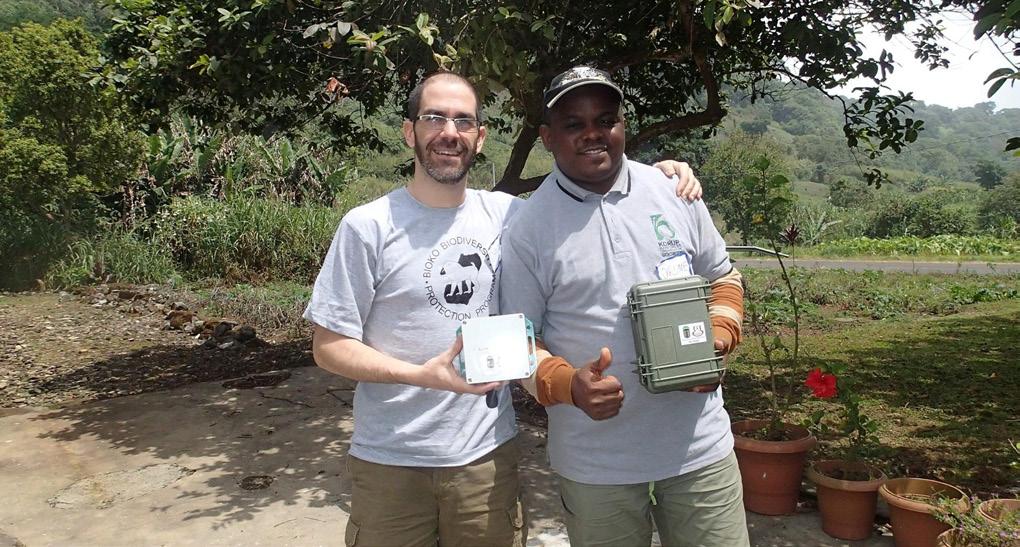 Dr David Fernandez, Senior Lecturer
Dr David Fernandez, Senior Lecturer
main source of income is the oil industry. The island’s Vice President, Teodoro Obiang Nguema, is“very keen on developing Ecotourism” but is aware “that hunting is a barrier towards developing this industry.”
Expanding ecosystems will also require more roads and
potentially increase wild meat hunting, leading to the suggestion that car checkpoints be added at the entrances of the new roads to deter hunters. Alternatively, there is a potential to create jobs within the ecotourism industry, hotels, and research stations for the locals. Research indicates that hunting is less frequent in areas with research presence and during the researchers’ data collection periods. Re-training the hunters to become eco-guards and forest rangers could also reduce hunting while creating employment opportunities on the island and harnessing valuable local knowledge.

Pennant’s Red Colobus, and other native monkeys are “prestigious and expensive” in the wildmeat tradeDr David Fernandez and Robison Orume, a Cameroonian researcher who supported the project New road connecting Belebu village, in the north of the Gran Caldera de Luba Scientific Reserve, and Ureca, in the south
As temperatures rise, the urgency of reaching zero emissions in the agriculture and food system becomes more obvious and the new UKRI scheme ‘AgriFood4NetZero’ aims to lay down the stepping stones to reaching it by 2050. This 5 million pound 3-year investment seeks to “bring together a network of academic and stakeholder partners across the agrifood system in order to negotiate what a pathway to net zero will look like for the agrifood system” says Angelina Sanderson Bellamy, the research project’s Principal Investigator and the Associate Professor of Food Systems at UWE Bristol.
While other sectors such as transportation and building have begun to reduce their greenhouse gas emissions the UK’s agrifood system still accounts for about 25% of overall emissions. This comes from livestock and fodder production which generate more than 3 billion tonnes of CO2 equivalent as well as postfarm transport and processing. The network, run by a diverse team of academics in fields like geography, biology, climate, agriculture and food
systems seeks to transform this with their 3 clear objectives: creating an active, open and inclusive community of practice, delivering a contextdependent roadmap to net zero and shaping the next decade of research through funding competitions and supporting projects to maximise their impact and future funding. This has looked like scenarios workshops that visualise the context of the UK’s agrifood system up to 2050 and interactive meetings with flash talks, discussions and debates. The consequences of not prioritising this kind of sustainability could be dire as we leave in our wake the hottest June on record. “If we don’t do something about getting to net zero, we’ll see catastrophic consequences in 30, 40, 50 years’ time” says Angelina.
Contention still thrives as some solutions could potentially threaten livelihoods of farmers, for example, as livestock produce considerable amounts of methane gas. However net zero does not have to mean veganism, as research is already underway into how we can raise livestock in a way that reduces their emissions
by altering their feed and the way it is produced. “We need to have diet changes, but I think that it also has to be very carefully considered; it’s so complex around dietary changes and what we should be eating.” says Angelina. The media has been guilty of targeting these farmers, but Angelina insists that they are not the bad guys, “they’re one piece of this equation that we need to figure out and they’re not the one answer”. The dynamics of the agrifood system are complex and it will take targeting many different areas to see the changes necessary.
With a hugely positive response upon its inception due to the size of the investment, there is hope of great engagement in the network. With collective effort and enthusiasm there is hope that by 2050 we will have reached net zero.

UK organic and sustainable farmers are increasingly reliant on social media networks to exchange farming information. Turning to social media over expert agricultural advice helps keep costs down in a financially challenging industry, according to research by Miriam AlFutaih, a PhD student in the School of Applied Sciences.
“Many sustainable farmers today are utilising social media platforms such as Facebook, Twitter and YouTube for the exchange of important sustainable farming knowledge” says Al-Futaih.
“Farmers have to pay to get organic certified or pay for advisors and this is where social media can help instead of paying for advisors.”
This reliance on social media comes at a time when the organic farming industry is booming. The organic market grew 13 percent in 2020 to a value of 2.79 billion pounds.
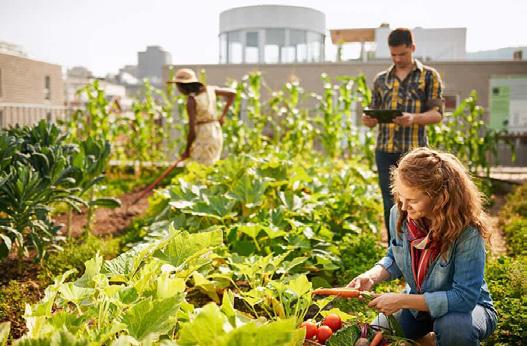
“You have more young people joining [organic farming], it’s becoming cool again,” says Al-Futaih, “and farming knowledge should be available and for free and social media
can provide this space.” By identifying the most effective methods and tools to communicate scientific knowledge within these online farming communities Al-Futaih hopes to support more farmers who want to take up sustainable farming practices.
However, while online farming groups provide cheap and direct exchange of knowledge, reliance on social media increases the spread of misinformation and distrust of science. AlFutaih says that between farmers and scientists this becomes a question of “who’s [agricultural] knowledge is more right”, preventing useful scientific advice from being taken up by sustainable farmers.
Reliance on social media, rather than expert advisors, is exacerbated by the financial challenges small-scale farmers face post-Brexit. Sustainable and organic farms are often isolated and turning a profit can be a challenge.
“In the UK farmers are not getting enough financial support. Within the EU you had the Common Agricultural Policy
and this used to pay farmers for converting to organic.” says Al-Futaih.
DEFRA’s new Agricultural Transition Plan 2021-2024, which sets out the new governance for UK farmers outside of the EU has no targeted support for small-scale sustainable agriculture. According to Al-Futaih this lack of targeted support for sustainable farmers will leave them worse off, increasing their reliance on social media and fostering distrust between farmers and scientists.
Al-Futaih, with the support of her PhD supervisors Angelina Sanderson Bellamy, Emma Weitkamp and Hannah Little, hopes that her work will help organic and sustainable farmers gain access to both costeffective and reliable farming information, leaving them better off.
The biodiversity crisis caused by artificial light cannot be solved with the flick of a switch. In fact efforts by local authorities to save carbon and cost through lighting reduction schemes can actually pose a risk to nocturnal wildlife. Research into waterways which are only partially lit shows a reduction in feeding and activity levels in certain species of bat. As bats are a strong bioindicator of the health of an ecosystem, these insights can tell us how
conservation measures, such as reduced lighting, impact the immediate environment. PhD student Jack Hooker has worked as an ecological consultant specialising in bat mitigation and is familiar with the challenges of human-wildlife conflicts. He is currently researching the impact on bats when habitats are temporary disrupted due to human activity and how well mitigation measures work. With public health measures in place for COVID-19, Jack had to adapt his research. He began
a smaller, connected project to examine light reduction schemes on waterways and their impact on bat behaviour. Focusing on eight unconnected waterways, lighting experiments were conducted over a period of four nights. With one night in complete darkness, the other nights were lit for varying periods of time: 2 hours, 4 hours or the full night. Expecting that bat activity would drastically reduce with the introduction of any lighting, Jack was surprised when they continued to fly

through, “The bats obviously had predefined routes or roosts in proximity to the study area and they were trying to either forage in that area or get to another area to forage.” Whilst the bats were still there, feeding rates either dropped off or were pushed back in accordance with the lighting times, with bats missing the peak time for insects. This project highlights the complexity that comes from a need to simultaneously tackle climate change, protect biodiversity and minimise disruption to human activity. In this instance whilst reduced
lighting may help climate change, the impact on the local bat population was less favourable. When it comes to these often competing challenges, Jack’s objective is to provide an evidence base to enable organisations to make sound decisions about the ways to alleviate the impact of human activity.

“There’s always going to be a need for lighting, so is there a way where it produces minimal disruption to humans, but increases the benefits to nocturnal wildlife?”
According to Jack there are things we can do individually
to help alleviate the impact on bats from artificial light, as well as support in their wellbeing more generally. Turning off large lights in our gardens, putting up bat boxes and planting night-flowering flora can all make a difference.
You can find out more about Jack’s research and the bat conservation research lab at batconservationresearchlab. co.uk
“There’s always going to be a need for lighting, so is there a way where it produces minimal disruption to humans but increases the benefits to nocturnal wildlife?”
Jack Holder, PhD student
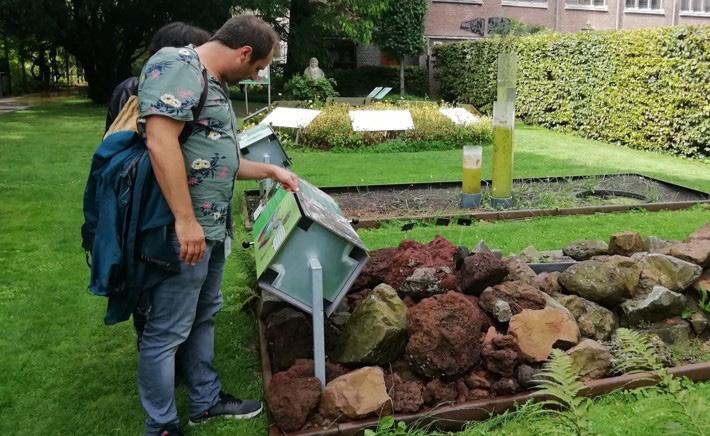 BY: RIANNA GREEN
BY: RIANNA GREEN
After finding herself working within botanical gardens, leading guided tours, Andreia shifted her biology background to understanding public engagement within gardens to communicate about plants. Describing herself as an “intermediary between plants and people”, she is now
working on her PhD here at the University of the West of England, completing interviews with staff from gardens in Portugal and the United Kingdom. This exploratory research is hoping to build up an understanding of how science communication is used effectively in botanical
gardens, and how science communicators in these gardens conceptualise the relationships between science and society. The first stage, however, was mapping out the current activities and target audience using reports from gardens in Europe. These were used to understand how they are engaging with the public. Her research includes two focuses: the involvement of the staff as science communicators, and what the gardens are doing as a whole. Although interviewing is already a complex skill that Andreia was more than happy to take on, another challenge is interviewing in a language that isn’t her mother tongue. Andreia is
bilingual and is using this to her advantage conducting semi-structured interviews in both English and Portuguese.
Andreia spoke about how interviewing was completely different in each language with unexpected obstacles such as: adapting questions on the spot, the difficulty of “interviews with short answers”, and trying to avoid asking leading questions. She shared how the analysis section is where she is starting “to see where I do my mistakes”. She discussed the struggle of not being perfectly fluent in
English and how transcription tools during online interviews have really been helpful for her to understand tricky accents. Yet despite the struggles, she was more than enthusiastic about the interviewing process, brightly declaring them the “favourite part of my thesis”.
Now analysing the data, she described some activities that were fairly common to all gardens such as the tours she had experienced and lectures or talks. She was really amazed by the gardens that go above and beyond with creativity, highlighting one case where the gardens

conducted public consultations for their activities “until that moment, no one had said they go to the street!”
As she is getting deeper into analysis, the picture of how public engagement is utilised within botanical gardens is becoming clearer, with Andreia noting that the scale of the projects or the gardens aren’t always representative of the public engagement that occurs.
Creativity is shown to be at the centre of successful engagement, more important than the budget or size of the team.
“Until that moment, no one had said they go to the street!”Andreia Jorge, PhD student PHOTO CREDIT: PIXABAY RICHARRD MC/
Piers Townsend started out in biology but now has a PhD in computational chemistry from the University of Bath. His research into the Ames test could have big implications for toxicology, and even the necessity of animal testing. The Ames test is a method developed by Bruce Ames at UC Berkeley in the 1970s in order to determine the risk a substance poses to organic life. The test involves growing a type of Salmonella bacteria in a petri dish, but with a mutation that prevents them from producing an amino acid needed for reproduction. The
A simplified 3D model of the interaction between a piece of DNA and a potentially hazardous substance
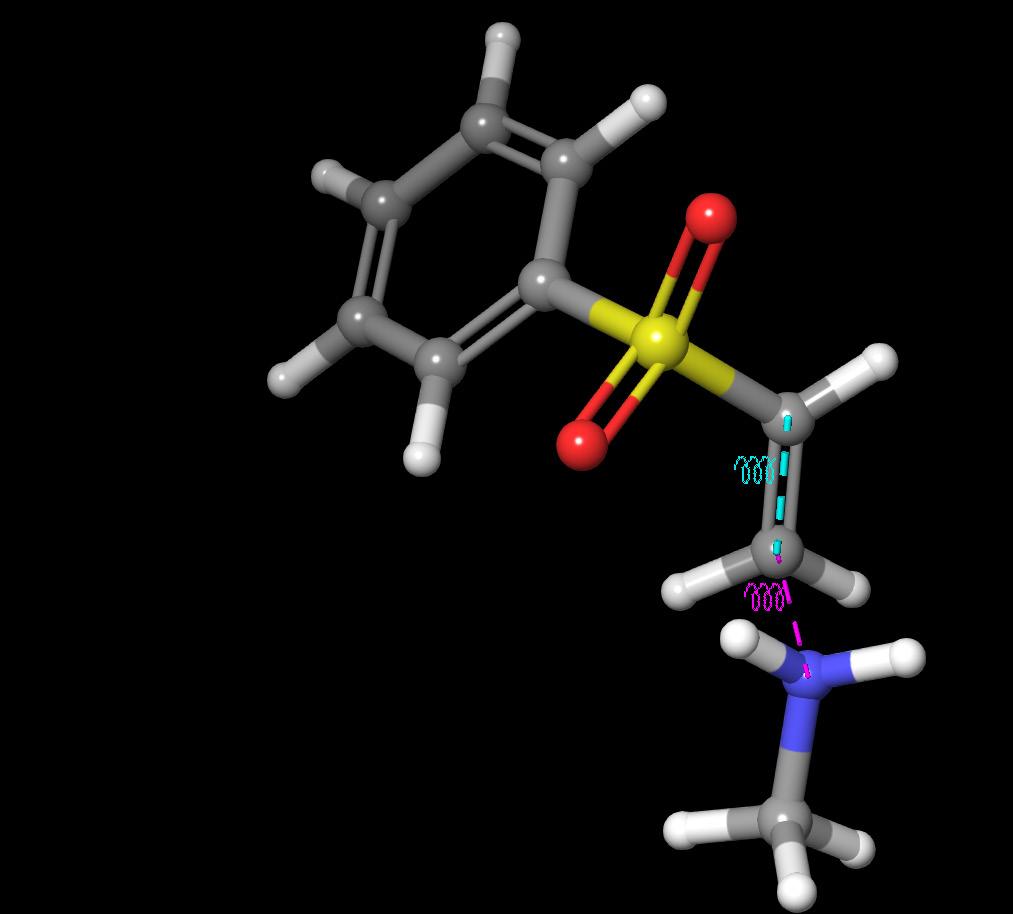
sample is then exposed to the substance being tested. If the substance can damage or modify DNA, then this could undo the mutation, and the sample will return to a state in which it can grow. Growth in the petri dish indicates that the substance is Ames positive and is therefore a biohazard. As it turns out, what’s helpful to the bacteria could be deadly to humans. Conducting an Ames test takes time and money, which is why Piers Townsend has been looking for a better way. The secret to replacing experimentation with computation comes from activation energy – how much energy you need to start a chemical reaction. A substance with low activation energy will react more easily, and therefore poses a greater threat than a high activation energy, which is less likely to react. To test if these activation energies could be calculated accurately using software, they tried it on
compounds that were already lab-tested, and it worked. The research into computational methods for the Ames test is in its infancy, so there haven’t been any major changes to industry practices yet, but there is an emphasis within the wider field of toxicology on moving towards a future where computers are used for more forms of analysis. Piers predicts that “we’re set to see a future where computational toxicology is significantly used in conjunction with experimental methods.”
Piers has not done any lab work for the last five years, but this doesn’t mean he wants to be shut off from the test tubes and burners. He says, “the real power of computational chemistry comes from working with experimentalists to test the theories that you’re generating.” The Ames test is important for developing new drugs and simulating the risks instead of inducing them could transform the industry. “I would like to see more research that combines science and policy; this could allow significant changes to be made at a larger scale.”
Without enough oxygen, cells suffocate and die. Yet, cancer cells adapt and thrive in these conditions. Is this unique characteristic that allows cancer to progress the same that will choke it?
Experiments led by Dr Alexander Greenhough, Researcher and Associate Professor of Biomedical Sciences at the University of the West of England, uncovered a new receptor protein responsible for cancer cell survival in reduced-oxygen conditions, or hypoxia.
The researcher believes that understanding how cells adapt to hypoxia could lead to new therapies that can kill cancer without harming healthy tissue by targeting and blocking this receptor.
“We want to know how cells sense and respond to their environment and hypoxia specifically,” says Dr. Greenhough. “Hypoxia is a good target for therapy because it occurs specifically in cancer, rather than healthy tissues.”
To understand how cancer cells adapt to hypoxic conditions, Dr. Alexander Greenhough used cancer cells grown in dishes

exposed to different oxygen levels and a proteomics technique to determine which proteins were activated or ‘switched on’ in hypoxic conditions.
As published in the journal EMBO Molecular Medicine, Greenhough found a protein that codes for a receptor, known as GPCR5A, that enables cell survival in oxygen-deficient condition and makes cancer more aggressive and quickly spread.
GPCR5A is a G Protein-coupled receptor from the GPCR receptor family, one of the best drug targets for various diseases. Blocking cells from ‘switching on’ this receptor using genetic techniques could induce cancer cell death.
The researcher explained how, initially, he didn’t set out to identify GPCR5A. However, when he detected that this receptor was highly regulated in hypoxia, he felt compelled to pursue it.
“GPCR receptors are among the
best drug targets because about 40% of all drugs target GPCRs, either directly or indirectly. We could potentially develop a drug that directly targets the receptor if we know more about how it signals.” Greenhough explained, “Traditional chemo and radiotherapy cause many side effects, but they are also quite ineffective against hypoxic regions. Suppose we can find a target that’s only present in the hypoxic cells, either by killing them or switching that receptor off. In that case, we could have a therapy that could work alone or in combination with others, which won’t affect healthy cells, and therefore reduce the side effects in patients.”
Dr Greenhough and a 3D organoid culture of intestinal epithelial cellsEnglish oak trees are in trouble. Daniel Maddox is a PhD student investigating why. His findings have potential implications for human health too.
Acute Oak Decline is a collection of symptoms affecting oak trees. It is believed to be caused by a combination of the effects

of soil pathogens, including bacteria, and environmental stresses, such as drought and air pollution. The trees develop weeping patches on their trunks, lose their leaves, are vulnerable to further infections and insect damage, and die within four to six years. First identified in the UK in the 1990s, it is now widespread.
Dan is investigating potential causes within the soil rhizosphere. The rhizosphere is the part of the soil that is in close contact with the trees’ roots.
Dan describes the rhizosphere as a gradient, starting next to roots where they release natural chemicals, spreading up to 30cm away. “It’s the nutrient acquisition point for plants. It’s the first point of contact between the roots and the soil. It’s where the micronutrients come from that don’t originate from photosynthesis.” This part of the soil is packed with bacteria which he is seeking to identify. As the COVID-19 lockdown began, Dan was rushing to collect soil samples from different sites. Sampling had to be done very quickly, he explained. Different samples must be taken at the same time because changes occur at the microscale.
Two years of laboratory work followed. The soil bacteria were carefully cultured, isolated and DNA sequencing used to
identify them. Dan has found several new species of bacteria already.
Understanding the bacterial communities could lead to solutions to Acute Oak Decline. The soil around healthy trees might hold bacteria which help to promote growth.

Dan explained: “Just as you can give gut microbiome transplants to cancer patients to give them a healthy gut again, so we can potentially do a similar thing with oak
trees and give them back these bacteria that have plant growth promoting properties.” But what about that link between soils and human health? “It really is a highly competitive microbial playground, where a competitive edge can rapidly emerge. Different bacteria take hold of certain niches and that almost certainly has human therapeutic application.”
Soils could be a source of new antibiotics, or compounds
to inhibit the growth of pathogens. If a new bacterium is found to reduce bacteria or fungi in soils, then perhaps the substances that it releases might have a similar effect in humans.
The hot dry summer of 2022 is expected to make Acute Oak Decline worse, so we hope that Dan can help to find the key to a solution.
Studies have demonstrated the medical applications of using molecular hydrogen (H2), including treatment of cancer, decompression sickness and soft tissue injuries. Anecdotal evidence for consumption of hydrogen rich water (HRW) has been seen in both athletics and post COVID-19 recovery. Molecular hydrogen is also seen to have positive effects on plants. During plant growth, H2 treatment affects seed germination, crop yield and stress tolerance: potentially significant for drought-prone regions. Post-harvest application
of H2-based treatments have also shown encouraging results in preserving fruits and flowers. Perhaps a useful tool in preventing food waste. Professor John T. Hancock recently returned from Europe’s first biomedical conference on the uses of molecular hydrogen and, along with PhD student, Grace Russell, has been researching the mechanisms of action and applications of this seemingly miraculous molecule. The anecdotal and experimental evidence base for the benefits of using molecular hydrogen has grown rapidly in the last decade, but with a variety of hypotheses on exactly what it does. H2 has been researched since the 18th century, but the last 15 years have seen an explosion in investigations. Hydrogen is relatively abundant, and the molecular form can be produced from a wide variety of processes including electrolysis of water. How H2 is applied can vary, including using HRW, H2 gas, or in topical treatments. But without understanding the exact mechanism of action, the methods of administration are not fine-tuned.
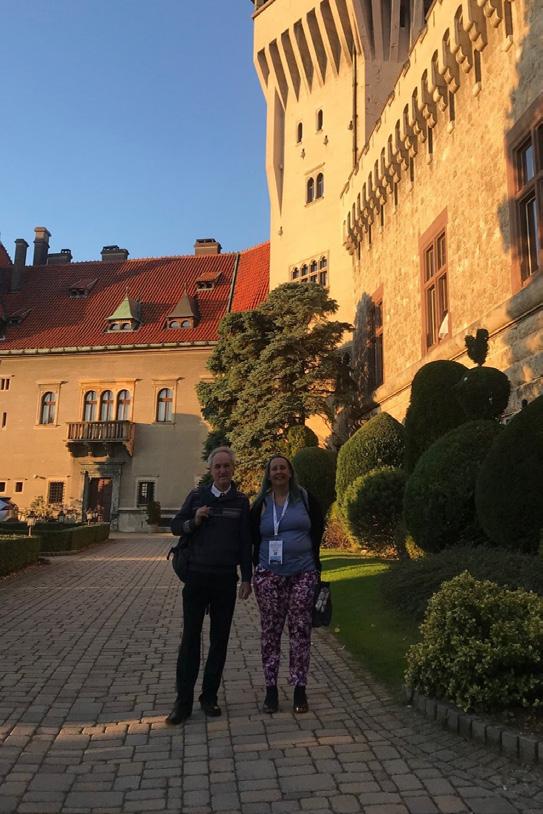
With a background in researching cell signalling –
how cells accept, process, and transmit signals – Professor Hancock has long held interest in “small molecules which have profound effects on biology”. The Professor of Cell Signalling at UWE and Editor-in-Chief of the journal Oxygen began reviewing the use of molecular hydrogen in 2017 and has been hypothesising the exact actions of H2. One theory of how it causes change is by acting as an antioxidant that has a direct interaction with the sometimesharmful by-products of cell activity. Hancock has been in discussion with other scientists about the hypotheses, including that H2 acts on proteins, changing their activity/inactivity status. Hancock says that we are “missing a gap” in knowledge of the exact actions, and the next steps could involve research from physicists. More research is needed to find the exact interactions, so we can best understand the steady stream of research evidencing the effects of this molecule.
Although explosive, if H2 in the presence of oxygen there’s no known toxic level to humans, and there are potentially monumental discoveries to be made working with this molecule in biological systems.
Dr. Madeline Robles, who did her PhD research on 3D modelling in Forensic Anthropology, is inspired by the problem of a mass influx of immigrants who die, unidentified, on the US border, leaving confused, bereaved, and sometimes helpless family members. These bodies most of the time do not have biological profiles based on DNA and fingerprints, so they have to rely on forensic anthropology: “… this is key for humanitarian efforts,” Dr. Robles says.
In examining skeletal remains, 3D modelling has become a blossoming area in Forensic Anthropology, offering new ways of capturing data to reconstruct and highlight remains. It has also offered more transparency in how decision making behind the methods of forensic anthropology is conducted. Hence, it has great importance, for example, in mass disaster scenarios, where identifying casualties as quickly as possible has become crucial to provide closure to the victims’ family and friends, or in other cases, where prosecution is being
sought.
“The Forensic Anthropologist’s role is primarily to assist victim identification and doesn’t really play a role in catching offenders, rather it is more focused on establishing possible identifications from unknown remains.” Dr. Madeline Robles maintains. She however agrees that “… [it] offers more pathways to accurately and quickly identify unknown human remains, as it could become crucial for crime reconstructions.”

She adds, “a Forensic Anthropologist assists law enforcement to establish a biological profile that will help to identify unknown biological remains. A biological profile is … age, sex, stature, et cetera; once the information has been collected, it can be compared with a missing person’s list or medical records... The use of 3D imaging was seen in the Victoria Bush fires in Australia, where human remains were placed into a body bag and a post-mortem CT scan carried out, from which
3D models were built.” When asked about the significance of 3D modelling, Dr Robles said “This allows for further examination of the human remains without actually having to physically handle the remains, because handling can imply damage and loss of evidence … it also allows easy second opinions to be attained because the 3D models can be securely sent to experts globally to provide further opinions and examinations.”
3D Modelling offers the opportunity for research across greater demographics, as the use of CT images and medical imaging offers more representation and offers lots of new innovative ways to collect and produce methods to fight faster victim
GREEN FORTNIGHT 2023
Green Fortnight will take place from 30 October to 12 November 2023.
If you would like to be involved or have any ideas of what you would like to see please get in touch with the UWE Sustainability Team.
Andrew Glester, Ruth Larbey, Andy Ridgway and Jane Wooster
Science Chatters is the podcast from the Science Communication Unit at UWE Bristol looking at research and news from around the university.

tinyurl.com/5ak85rzn
All the articles are written by students in the School of Applied Sciences at the University of the West of England
Emma Brisdion shares her experiences since studying the MSc in Science Communication at UWE Bristol in this film
https://tinyurl.com/3x5m7cwa
